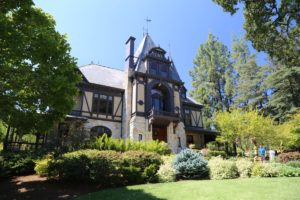
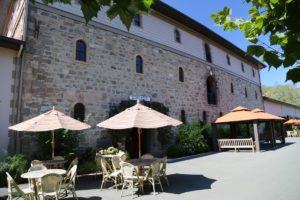
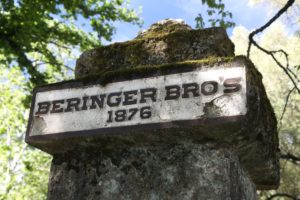 Beringer Vineyards is one of Napa Valley’s most historic wineries; the physical winery was built in 1877 in St. Helena, two years after Jacob and his older brother Frederick (also known as Fritz, died 1902) Beringer purchased property in this part of the Napa Valley from William & Marie Daegener. According to a March 2nd article in the St. Helena Star, the Beringer Brothers first purchased land in St. Helena in 1875. The cornerstone was laid in late March 1877 along with a $20 gold piece, a copy of the St. Helena Star newspaper and several bottles of wine. Once completed later in the year, it was described as, “the most handsomely furnished of any in the valley. Another newspaper clipping in the November 16, 1877, St. Helena Star references the first production was in 1877 at the new winery (built by Chinese laborers) and was 40,000 gallons. However, the accepted founding date of the winery is always listed as 1876 – but in our research, we haven’t yet been able to find any historical records showing anything about that first vintage other than it was produced by Jacob Beringer.
Beringer Vineyards is one of Napa Valley’s most historic wineries; the physical winery was built in 1877 in St. Helena, two years after Jacob and his older brother Frederick (also known as Fritz, died 1902) Beringer purchased property in this part of the Napa Valley from William & Marie Daegener. According to a March 2nd article in the St. Helena Star, the Beringer Brothers first purchased land in St. Helena in 1875. The cornerstone was laid in late March 1877 along with a $20 gold piece, a copy of the St. Helena Star newspaper and several bottles of wine. Once completed later in the year, it was described as, “the most handsomely furnished of any in the valley. Another newspaper clipping in the November 16, 1877, St. Helena Star references the first production was in 1877 at the new winery (built by Chinese laborers) and was 40,000 gallons. However, the accepted founding date of the winery is always listed as 1876 – but in our research, we haven’t yet been able to find any historical records showing anything about that first vintage other than it was produced by Jacob Beringer.
The Daegener’s had purchased the property from David Hudson in 1872; Hudson was born in Missouri, and at the age of 25 left the state on a wagon train – the first wagons to cross the Sierra Nevada on what was known as the Overland Trail. The group arrived in Napa Valley later that year and spent a winter in what is now Calistoga. Their timely arrival allowed them to participate in the Bear Flag Revolt in the town of Sonoma in 1846. In 1848, Hudson purchased this property from a well-known early Napa pioneer Dr. Edward Bale (namesake for the nearby Bale Grist Mill). Early records show that Hudson first planted a vineyard on his property in 1852. This was certainly one of the earlier vineyards in the Napa Valley – for perspective, George Yount planted the first vines in Napa Valley during the winter of 1838/1839.
The Beringer brothers (later locally known as los hermanos) were from Mainz, Germany (a wine growing region along the banks of the Rhine River that today is about a 40-minute drive with little traffic from Frankfurt). Jacob (died in 1915) already had a background in wine before he arrived in the United States; he worked at Tim & Floske wine cellars in Berlin in his early 20s followed by time making wine at J.A. Harth and Company, a Mainz based wholesale wine dealer that was established in 1848. He came to New York in 1868 and became foreman of the cellar at the wine merchant, Truche and Winkenbach. In short time he opened his own business selling German wines and seltzer waters.
Mainz is a gorgeous city rich with history dating back to its Roman founding in the 1st century BC; it is well worth a visit for any traveler who finds some extra time in or around Frankfurt. Only about a 25–30-minute drive from the Frankfurt airport and the center of town is about a 15–20-minute walk from the edge of the Rhine River. Known as the city where Johannes Gutenberg was born and died; he invented the printing pressin the mid 1400’s and printed the first books ever using this system including the famous Gutenberg Bible.
While there are still plenty of historical buildings if one knows where to look – numerous old buildings were unfortunately destroyed during many air raids during World War II (up to 80% of these old buildings). One wanders the cozy streets wondering which buildings would have been seen by Jacob and Frederick back in the 1840s and 1850s.
And like during the decades the Beringer Brothers lived here, Mainz is still a major wine center with numerous vineyards and wineries in the region. The city hosts the annual Mainzer Weinmarkt (wine fair), was the original home of the Blue Nun (prominent international brand) and was the birthplace of Johann-Joseph Krug (the founder of Krug Champagne in France).
His brother Frederick was already well established in New York as he came before Jacob – in 1862. Frederick built up a very successful malt and barley business; at one point his business address was 40 Whitehall Street in New York City. He wouldn’t recognize the site today as its home to a towering skyscraper. He later operated a wine merchant and cellar at 180 Fulton Street, was president of the Arion Society of New York (an organization promoting German music and culture) and was friends with influential people of the time including President Grover Cleveland. And the brothers had at least one other brother – who remained in Germany and was a priest.
Jacob arrived in St. Helena in 1870 at age 26 and took a job as cellar superintendent at Charles Krug Winery – he worked at Krug until 1878. He was also an early member of the St. Helena Vinicultural Club (the precursor to today’s Appellation St. Helena). In 1876 he purchased property in St. Helena including the site that would become Beringer Vineyards with the financial help of Frederick (who had yet to see the property). And in 1879 the brothers expanded their vineyard holdings. Caves were dug into the hillside by hand taking about 15 years to complete – the laborers were Chinese. There are very few wine caves in Napa Valley, hand dug and dating from pre-1900. Several others are at Storybook Mountain, Del Dotto in Napa and at Stags’ Leap Winery.
After Jacob died, his children Charles and Bertha took over the operations.
Remarkably, Beringer Vineyards has never missed a vintage throughout decades of making wine – during Prohibition (when wineries were shuttered, they dried most of their grapes – usually the variety Petite Sirah) and also made Sacramental wine. This makes Beringer the oldest continuously operating winery in the Napa Valley (despite the fact there are older wineries in the Napa Valley). Beringer is also the first Napa winery to offer public tours starting in 1934. And after Prohibition they capitalized nicely on market tastes favoring sweeter wines – as for some time a sizable part of their production were sweet wines.
And all properties with as long a history as this one has both good and bad stories. In 1890, Jacob Grub an employee of Beringer Brothers shot and killed himself in the head on the winery property not far from the cellar after leaving a note to some friends (which was published in the local newspaper – makes for a sad read).
Beringer Brothers gravesites, Holy Cross Cemetery, St. Helena
Two historic homes on site are of note. The cornerstone for centerpiece home on the estate, the Rhine House was laid down in 1883 and construction was completed by 1884 – the year the Frederick moved from New York to his new home in St. Helena. According to a September 11, 1883, article in the St. Helena Star the following items were entombed in the cornerstone in glass jars: coins, photographs of the Beringers, local newspapers, samples of bottled wine from the property, a telegram from Frederick and miscellaneous cards and other items. If still intact, those would most likely be among the oldest still filled bottles of wine produced by Beringer Vineyards. This home was built for Frederick Beringer and his family. A glass conservatory used to stand in front of the home and along with a tall brick chimney that fell through the roof – were destroyed in the 1906 earthquake. Today this stately beauty functions as a premium hospitality center and offers small inventories of boutique and reserve wines, including some older vintages of select wines (as well as the opportunity to taste some of these rarer wines).
The more modest looking (but more historic) Hudson House was built in 1850 and originally stood where the Rhine House stands today. Named after its builder, David Hudson – the house was pulled from its original location by horses on heavy logs to its current location. David was also involved in the Bear Flag Revolt of 1846 in Sonoma (about a 50-minute drive from Beringer in neighboring Sonoma County). Today the Hudson House is home to the Beringer Culinary center where their chefs create meals for special and private events (hosted both inside the home and weather permitting, outside in a beautiful circular redwood grove). Ingredients are generally local even some sourced from two gardens on the property. The downstairs features the Executive Room – a well decorated often somewhat dimly lit space used for hosting private events. Well-known chef, Gary Danko spent 6 years cooking at Beringer.
Note the picturesque 150+ year old walnut next to the redwoods; one of their labels is called “leaning oak” named after a leaning oak on the estate – perhaps this walnut can grace the label of a Beringer wine in the future. Only part of the current Hudson House is original – the front room and the front deck – the back room and kitchen were added in the late 1980s.
In the “old days” Beringer operated a distillery and several of their longtime customers (now in their 80s and 90s sometimes ask for Beringer Sherry when they visit!) The stone castle-like looking distillery was originally built on the north side of the winery in 1879, was severally damaged in the 1906 earthquake and subsequently fixed. It was eventually completely removed in the 1970s.
Note the “Avenue of Elms” found in front of this winery – the original elm trees lining both sides of the highway in front of the winery were planted in 1885 by the Beringer brothers.
Sometimes visitors to the valley only associate Beringer Vineyards with cheap supermarket wines, IE White Zinfandel, their most produced wine. Do not make that mistake – Beringer has access to some of the top vineyard sites in all of the Napa Valley. Their premium wines will hold up against any of Napa’s other top producers.
Beringer Vineyards is also one of a select few Napa wineries that because of its heritage, access to resources and being one of the iconic physical properties of the Napa Valley – carries a great weight of responsibility to continue to nurture an environment of openness and education for the valley’s visitors.
Hospitality

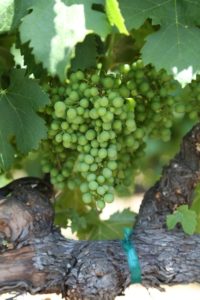 Once visitors arrive at the winery be sure to stop in the Hospitality Room located near the parking lot before climbing the stairs up to the actual winery. Here you can acquire information about tours, the winery and pick up a free self-guided estate map. A path winds its way around near the historical Rhine House passed on your drive in – this is a good area to take some photos.
Once visitors arrive at the winery be sure to stop in the Hospitality Room located near the parking lot before climbing the stairs up to the actual winery. Here you can acquire information about tours, the winery and pick up a free self-guided estate map. A path winds its way around near the historical Rhine House passed on your drive in – this is a good area to take some photos.
A variety of tours are given several times a day; one can sign up for these at the time of your visit. The Beringer Introduction Tour offers visitors a self-guided tour through the old hand dug caves – most of which have been enlarged and sealed over with gunnite but there is one small cave still preserved. A library wine room is seen on this tour which has bottles dating back 50+ years. Incidentally a scene from the movie Walk in the Clouds was filmed in front of this small room within the cave (with actors Anthony Quinn and Keanu Reeves). The reserve room is decorated very nicely and is intimate. Photos of famous mostly older movie stars who visited the winery over the decades hang on the walls behind the tasting counter.
Napa Valley wine cave pioneer Alf Burtelson, a general engineering contractor who founded his company in 1964 worked on his first cave job in Napa Valley in 1972. He was referred to Nestle (the company who owned Beringer at the time) by the engineering firm, John A. Bloom & Associates. This was to repair and reinforce the original Beringer 1,000 foot hand-dug caves – which his company did successfully; this eventually led to more work for Beringer including drilling new caves for them. Alf is well into his 80’s now and long since retired although is still living in the northern part of Napa Valley.
Alf’s first job was working on building a several mile stretch in the late 1950s of what is now the 280 freeway south of San Francisco. He formed Alf Burtleson Construction company in 1964; his first client was the San Francisco Water Department with work conducted on Twin Peaks.
For a period of time in the 1980s Alf’s company was the only company drilling winery caves within Napa Valley. His drilling rig was a Dosco MK2a Roadheader which was originally used in the UK for drilling coal mines. Alf told us he chose this equipment because it was able to drill curved ceilings rather than some of the American equipment at the time could only drill flat ceilings. He sold his company in 2003; the last winery cave he drilled in Napa Valley was for Bryant Family Winery. A look at Napa Valley’s wine caves including the significant contributions that Alf made to the valley is highlighted in the book, Into the Earth: A Wine Cave Renaissance by Daniel D’Agostin and Molly Chappellet.
Photos of all their winemakers sit on top of barrels in the cave. Most of the barrels you see in this cave are empty and are for show rather than for wine making. The tour typically includes three wines, a small production white, a red and often a sweet fizzy wine to finish the tour.
A tasting in the Rhine House focuses on their premium wines and includes a choice of 4 wines from the tasting menu. This menu is heavily weighted towards vineyard designate and reserve Cabernet Sauvignon although if you enjoy Chardonnay, do not ignore their “Private Reserve” Chardonnay. This wine was originally produced in 1980 and its early source was from the Gamble Ranch in Yountville. Unusual in its style at the time, this wine was barrel fermented (continuing to do this for current vintages).
Weather permitting, tasting is outside on the wooden porch surrounding part of the home.
A ‘hidden’ part of the Beringer property is located behind the Rhine House. There are a number of chairs, a bocce ball court and a corn-hole game situated in a very peaceful and often quiet part of the property under the stately oak trees. On the weekends in the summer there is often live music and the reasonably priced ‘sandwich’ box otherwise known as the Sherry Shack (located in a tiny wooden building) open for service. This is a great place to relax with some Beringer wines in hand.
A contemporary gift shop and reserve tasting room are located in the main stone winery building. The gift shop sits in what used to be a huge tank room and if you look on the walls you can still see the written tank numbers.
—
Beringer has enjoyed a long history with Hollywood and celebrities; Elvis stopped in while filming Wild in the Country in Napa Valley in 1961. Clark Gable visited Beringer several times a year for a period including spending part of his honeymoon at Marston Vineyard on Spring Mountain, a site that Beringer has sourced fruit from for several decades. Others enjoyed visiting including boxer and 1930s heavyweight champion Max Baer, boxer Rocky Marciano, singer Rudy Vallee, actress Ginger Rogers, actors Bud {Abbott} and Lou Costello and the list goes on. And in 1959 Rock Hudson was part of several scenes filmed on property for the movie This Earth is Mine.
The Beringer family sold their iconic winery in 1971 to Nestlé Corporation (the Beringers lived on the property until the sale), and it was during the Nestlé ownership that the massive winery was built on the other side of the highway in the early 1970s. As a side note, after the sale of the winery, Fred and Cathy Beringer purchased an existing wine shop in downtown St. Helena called The Bottle Shop. They renamed it to St. Helena Wine Center in 1992 – and it remains family owned and operated. In early 2020 the name of this shop reverted back to The Bottle Shop and unfortunately in early 2021 this shop closed permanently.
Vineyards
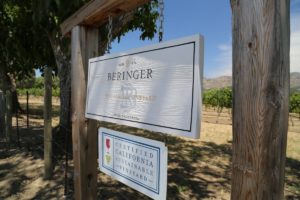
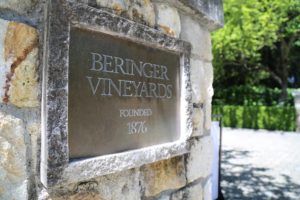
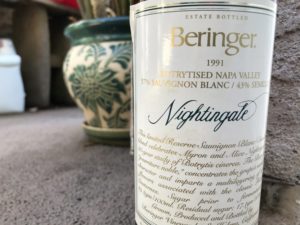 Beringer has select partnerships with a number of excellent family owned vineyards in the Napa Valley – and the wines they produce from these vineyards are often made in limited quantities. One such vineyard they have worked with since 1986 is the 89-acre Bancroft Ranch Vineyard at 1,800 feet on Howell Mountain. This vineyard was originally planted in 1982 by the Bancroft family (James Bancroft died in late 2018 at age 99) is planted to several varieties, namely Cabernet Sauvignon and Merlot and fruit from the vineyard goes into their Private Reserve Cabernet Sauvignon.
Beringer has select partnerships with a number of excellent family owned vineyards in the Napa Valley – and the wines they produce from these vineyards are often made in limited quantities. One such vineyard they have worked with since 1986 is the 89-acre Bancroft Ranch Vineyard at 1,800 feet on Howell Mountain. This vineyard was originally planted in 1982 by the Bancroft family (James Bancroft died in late 2018 at age 99) is planted to several varieties, namely Cabernet Sauvignon and Merlot and fruit from the vineyard goes into their Private Reserve Cabernet Sauvignon.
The soils (if you can call them that) from the Bancroft Vineyard are composed of compressed ash which has essentially become rock. There is typically between 0 and 24 inches of topsoil – the grapes have to struggle for nutrients and root space in these difficult growing conditions. The micro-climate at this elevation produces temperatures that are often lower than the valley floor on average – as a result the growing season here is longer (one year they picked during the first week of November). At a glance the rows of vines may look like one continuous vineyard – however the vineyard management team does not simply pick the entire vineyard at once. Rather they separate the vineyard into numerous smaller blocks – each of these blocks is picked only when ready. And based on the different varieties and micro-climates within even this vineyard – picking can take weeks to complete.
Select Wines
The 2019 Beringer Vineyards Sauvignon Blanc is a Beringer Winery and club exclusive wine. This wine was sourced from two sites, their Calistoga Ranch and Larson Ranch. It was aged entirely in stainless steel (for 10 months), saw no oak and did not go through malolatic fermentation. This wine is medium yellow color in the glass; our initial words when smelling it were tropical meets citrus. Offers aromas of mandarin, pineapple, citrus blossom and as the wine breathes a sweet honeysuckle note and hints of jasmine develop. The bouquet is highly aromatic and certainly not the green grassy showing that this variety is commonly associated with when it is sourced from cooler vineyard sites. Rounded, supple and creamy across the palate (one could also say, it almost has an oily texture), offers rich flavors of citrus, mango and Golden Delicious apple. Also, an orange melon note. Not tart or lean on the palate. Final alcohol is nearly 16%.
We have enjoyed several vintages of the “Private Reserve” Cabernet Sauvignon over the years (the first vintage of this wine was from 1977). It is always created from the best lots from multiple vineyards in the Beringer portfolio. This wine tends to be big, rich, chewy – a full bodied Cabernet Sauvignon that will age very well for many years. It has also been very highly rated by the most respected wine writers in the industry; the latest vintage we tried, the 2015 earned 99 points from Robert Parker’s Wine Advocate. Three things stood out from our tasting of this wine; the highly appealing aromas – ripe but elegant, the intensity of fruit on the palate and the wonderful balance from start to finish, especially for such a young wine. The Beringer Private Reserve is also available in large format bottles – we have seen bottles for sale up to 9L.
Case in point as to the excellent age-worthiness of this wine is the 1993 Beringer Private Reserve Cabernet Sauvignon – still noticeably dark in the glass some 25 years after vintage offers aromas of blackberry – a ripeness of fruit if you will (still plenty of fruit showing), a smokiness, dry earth, darker chocolate and a subtle note of mocha. Highly aromatic. Dense and dark on the palate with lots of fruit – including blackberry and black cherry. A brightness also shows on the finish – good acidity with fine grained noticeable tannins that linger for quite some time. Very balanced, a very polished showing.
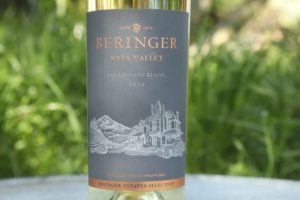
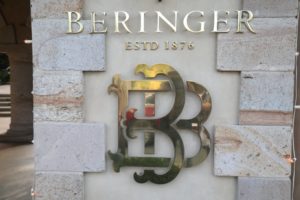
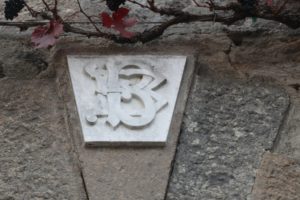 And equally as impressive is the 1987 Beringer Bancroft Ranch Merlot. What is noticeable about this wine some 30+ years after vintage at the time of our tasting was its freshness – its liveliness and still very much present acidity. Initially it shows a spicy presentation on the bouquet, a combination of old cedar, old leather and cigar smoke and as it breathes, dark chocolate and dessert spices are revealed. On the palate, this wine is supple and seamless with flavors of currant and black licorice anchored by a mouthwatering finish. The tannins are integrated, as one would expect.
And equally as impressive is the 1987 Beringer Bancroft Ranch Merlot. What is noticeable about this wine some 30+ years after vintage at the time of our tasting was its freshness – its liveliness and still very much present acidity. Initially it shows a spicy presentation on the bouquet, a combination of old cedar, old leather and cigar smoke and as it breathes, dark chocolate and dessert spices are revealed. On the palate, this wine is supple and seamless with flavors of currant and black licorice anchored by a mouthwatering finish. The tannins are integrated, as one would expect.
The Nightingale Sauvignon Blanc/Sémillon is a special Sauterne-style dessert wine that was started by their legendary winemaker Myron Nightingale and his wife Alice (with their first vintage from 1980 and named in their honor in 1983). We had the rare opportunity some years back to tour the production area needed to create this wine at the winery across the highway from the main Beringer property. Botrytis cineria spores are cultivated, kept cold in a refrigerator and when needed are sprayed on trays of grapes. Rather than being subjected to most vintages where the conditions are not optimum to product natural botrytis cineria, these wines can be made every year in the winery. Earlier vintages used to be produced in 750ml bottles (we’ve seen some of these for sale at the winery); today they are produced in the 375ml bottles. This wine can age remarkably well – and compared to similar style wines is available at a reasonable price to quality ratio.
The 1991 Beringer Private Reserve Nightingale. The cork was extremely brittle, so we had to carefully tease it out with an ah so opener. This wine is dark amber in color with aromatics of dried apricot, creme Brulé, honeycomb and brown sugar. A richness of flavor washes over the entire palate from start to finish – showcasing both an intensity of fruit including dried peach and apricot along with plenty of dessert type flavors including toffee, creme Brulé, and a lingering nutty characteristic (hazelnut). Feels creamy in texture and slides across the palate as smoothly as Dorothy Hamill gliding into a turn on the ice. Nearly 30 years post vintage, perhaps we made the mistake of opening this to early. This wine has lively fruit and bright acidity to carry this for at least another 30 years. Although we would feel more confident if the cork was replaced.
Beringer produces a wide variety of wine – winery exclusive wines are not found in the retail marketplace and are available only at the winery or for club members (often you can also find older vintages of select wines available for sale at the winery). Beringer’s wines range from inexpensive to premium pricing for current single vineyard or private reserve wines. As a result, there is a diversity of wines for all types of tastes and budgets ranging from their sweet popular sparkling white Zinfandel to hand crafted single vineyard Cabernet Sauvignon.
And Beringer produces a line of wines labeled, Beringer Bros. Spirit Barrel Aged Wines, they age the wines in old spirits barrels. A bourbon aged red blend was their current release at the time of our latest update to his review.
—
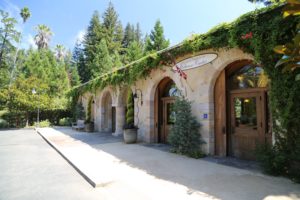
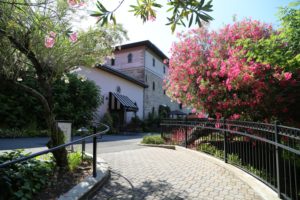
 Beringer has employed a number of other well-known winemakers throughout its history including following Prohibition, Fred Abruzzini (who also was a talented spokesperson for both the winery and the Napa Valley) and later Roy Raymond, Ed Sbragia and Laurie Hook. Raymond started working in the cellar at Beringer in the fall of 1933, learning from Otto Beringer at the time (Jacob’s son). Raymond eventually married Jacob’s granddaughter Martha; Raymond worked at Beringer for 37 vintages.
Beringer has employed a number of other well-known winemakers throughout its history including following Prohibition, Fred Abruzzini (who also was a talented spokesperson for both the winery and the Napa Valley) and later Roy Raymond, Ed Sbragia and Laurie Hook. Raymond started working in the cellar at Beringer in the fall of 1933, learning from Otto Beringer at the time (Jacob’s son). Raymond eventually married Jacob’s granddaughter Martha; Raymond worked at Beringer for 37 vintages.
The historical plaque which is fastened to the east facing wall of the winery was unveiled on April 30, 1967; a number of Beringer family members were present for the ceremony that day as was Roy Raymond and his family.
In 2015 Mark Beringer was hired as head of wine making, co-founder Jacob Beringer’s great-great-grandson. Mark is well-respected in the industry having worked at Napa notables Duckhorn Vineyards and Artesa Winery. Incidentally during high school, he worked on the family property. Mark remained winemaker at Beringer Vineyards until 2021.
Note that Beringer’s huge winery & production facilities are located across Highway 29/128 but are not open to the public. Also note that left hand turns out of their driveway across the highway requires your full concentration due to somewhat limited visibility (which is why exiting visitors are encouraged to turn right in part helped by the clearly painted right hand turn arrow marked in the pavement of their driveway).
Famed American now retired football star, Joe Montana used to have a label produced under his name here – he teamed up with Beringer’s winemaker at the time Ed Sbragia to produce Montagia.
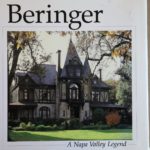 And well worth reading is the book co-written by Lorin Sorensen and Fred Beringer titled, Beringer, A Napa Valley Legend, published in 1989. This is book offers a detailed perspective of Beringer’s storied history from its founding through the decades of family ownership as well as after the Beringer family sold the winery. In addition to Sorensen’s love of history, he had a personal connection with Beringer Vineyards. He used to own a vineyard on Silverado Trail and sold grapes to Beringer for their private reserve bottling. He is also the father of Jane Ballentine (married to Bill Ballentine of William Cole Winery).
And well worth reading is the book co-written by Lorin Sorensen and Fred Beringer titled, Beringer, A Napa Valley Legend, published in 1989. This is book offers a detailed perspective of Beringer’s storied history from its founding through the decades of family ownership as well as after the Beringer family sold the winery. In addition to Sorensen’s love of history, he had a personal connection with Beringer Vineyards. He used to own a vineyard on Silverado Trail and sold grapes to Beringer for their private reserve bottling. He is also the father of Jane Ballentine (married to Bill Ballentine of William Cole Winery).
A bridge opened in 2019 connecting neighboring what was Las Alcobas Hotel (now Alila Napa Valley) to the Beringer property with a very short walk from the bridge to the Rhine House.
—
Treasury Wine Estates
Accordingly to a list published in 2024 by the Wine International Association, Treasury Wine Estates is currently the 3rd largest wine company on the planet. Treasury was formerly the wine division of the Australian based Foster’s Group and was founded in 2011, although its roots can be traced back to the mid 1990s when Foster’s began to build out their wine division.
Treasury Wine Estates owns or manages some 22,000+ acres of vineyards in Australia and New Zealand and throughout Treasury Americas, a division of Treasury Wine Estates, nearly 10,000 acres of vineyards in the USA, primarily in Napa Valley, Sonoma County and California’s central coast.
As of our latest update to this review they are the largest controlling entity of vineyards in Napa Valley primarily through leased land. They own several of Napa Valley’s most iconic, historical and storied producers including the following six wineries: Beaulieu Vineyard, Beringer Vineyards, Etude, Frank Family, Stags’ Leap Winery and Sterling. And of the other brands under their ownership, Penfolds in the Barossa Valley, Australia is arguably the most famous.
Headquartered in Melbourne, Australia the company also maintains regional offices in United Kingdom (Treasury Europe, Middle East & Africa), Singapore (South East Asia) and China (North Asia). And their U.S. headquarters is located in the historic Gordon Building, as part of First Street Napa developed by Zapolski Real Estate in the heart of downtown Napa.
The Gordon Building was originally constructed in 1904 as the Hayes Theatre but it burned down. The current building dates from 1929 and then a second section added in 1935. This building is on the National Register of Historic Places; its namesake is from its builder, Samuel Gordon. The exterior Spanish Colonial Revival style certainly stands out among other nearby downtown buildings. It was damaged during the August 2014 earthquake and later underwent significant restoration which was completed in early 2020. In 2022 the building won a Preservation Design Award for Rehabilitation from the California Preservation Foundation.In 2019 the company moved its headquarters to one of the uppermost floors in one of Melbourne’s most iconic buildings, the T&G Building located on Collins Street a few minutes’ walk from the Flinders Street Railway Station. The T&G building, named after the T&G Mutual Life Assurance Society was built in 1928 and features a gorgeous atrium like setting and high-end retail shops on the ground floor as well as 10 floors of office space. This was one of Melbourne’s first large scale office buildings. Despite being one of Melbourne’s prominent and historical buildings, Treasury Wine Estates keeps a very low profile and has no signage.
In 2022 Treasury unveiled a significant winery located in the Barossa Valley with an annual capacity of producing nearly 26.5 million gallons of wine. The property and winery are located next to Wolf Blass Visitor Center in Nuriootpa (Wolf Blass is also owned by Treasury).
In 2023 Treasury purchased Paso Robles based Dao Vineyards for nearly $1 billion USD.
Solar power. Also in 2023, it was announced that every Treasury Americas winery will generate more than 50% of its electrical needs from on-site solar power. Critical to obtaining this goal, approximately 13,000 solar panels were installed as part of more than 29,000 solar modules installed at its properties across the globe. By 2024, Treasury Americas was 100% powered by renewal energy. And in 2024 Treasury announced the Brighter Future Initiative in Napa Valley in partnership with Napa Valley College and Napa Firewise to enhance fire safety in Napa Valley.
—
Beringer offers a number of more intimate events to club members including special tastings, vineyard tours paired with lunch prepared by their in-house chef or sometimes bring in noted food or wine guest authors. There are numerous benefits to joining one of their wine clubs – special mention must be made about their most coveted club offering, the Collectors Club (featuring the best wines Beringer producers). For more information, or to join one of their wine clubs, visit: www.beringer.com
Rhine House
Hudson House
Hospitality Center
Grounds
Original Caves
Bancroft Vineyard
Steinhauer Ranch
Production
We have taken a tour of part of their production facility before – photos coming soon.
Las Alcobas/Beringer Bridge

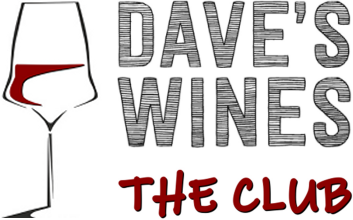




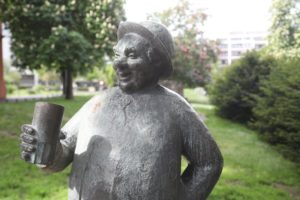
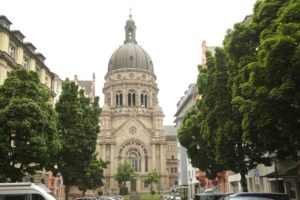
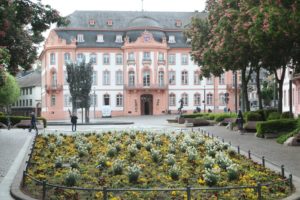
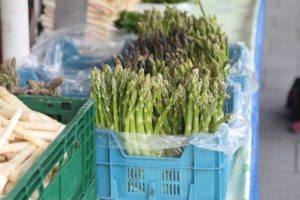
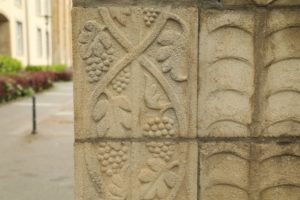
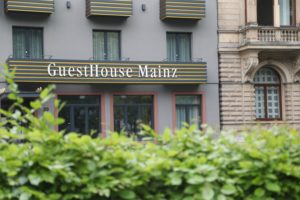

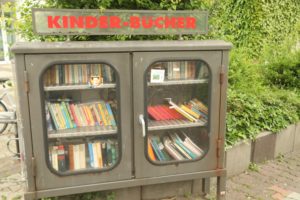

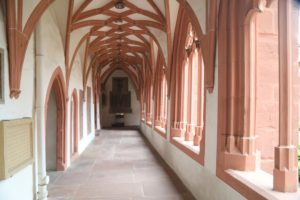
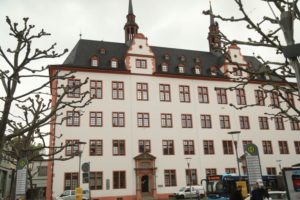
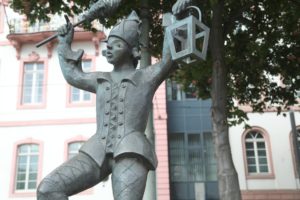
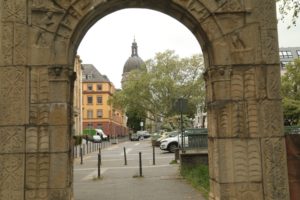
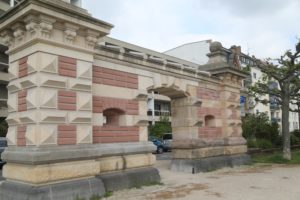
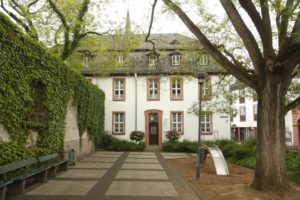
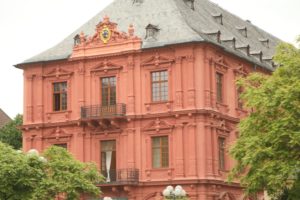
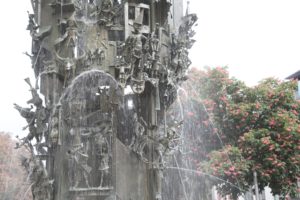
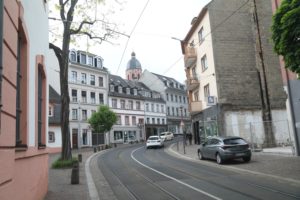
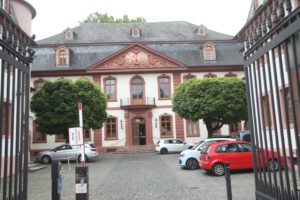
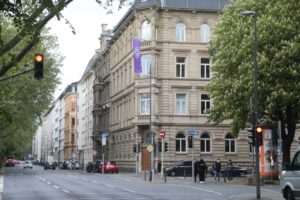

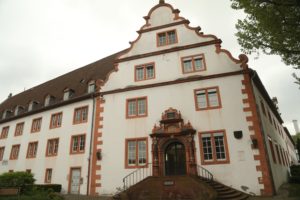

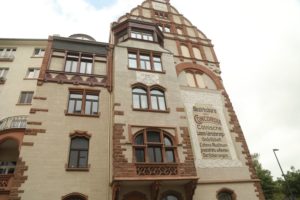
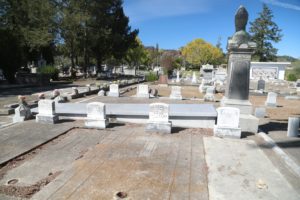

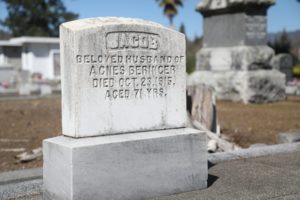

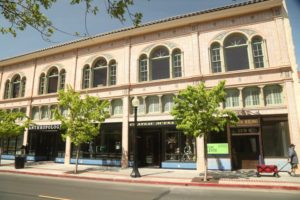
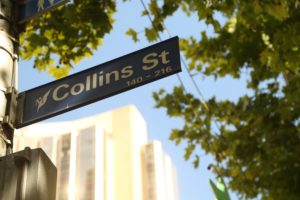

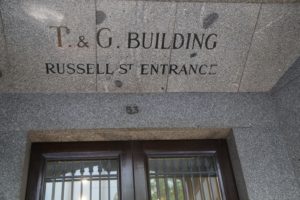
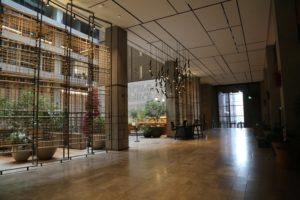

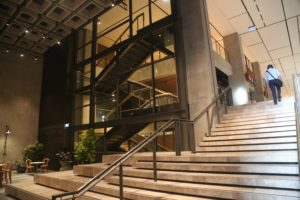

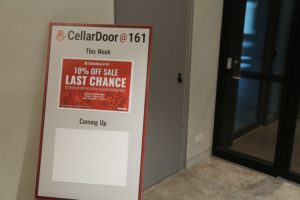
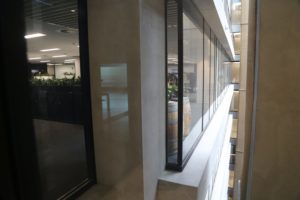
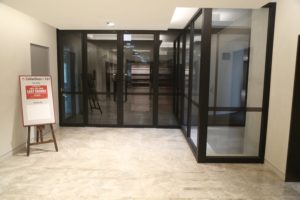
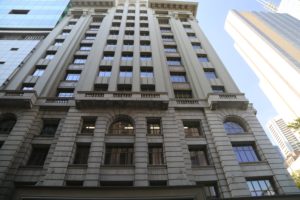

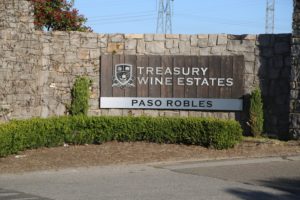

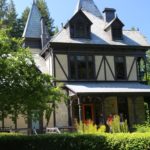
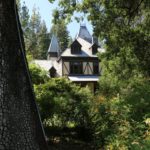
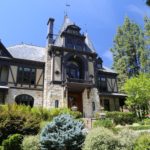
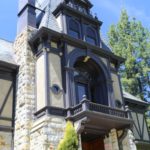

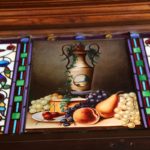
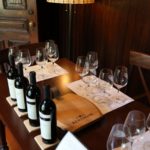
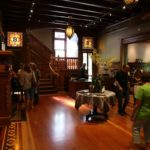

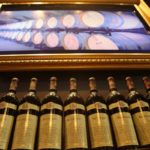
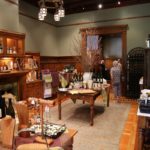
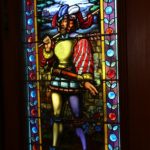
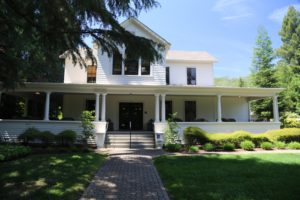
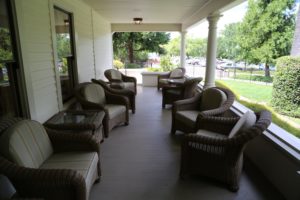



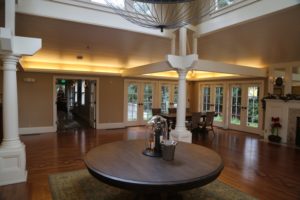
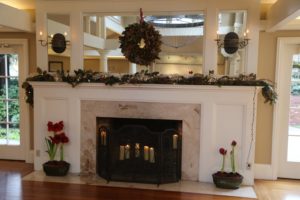
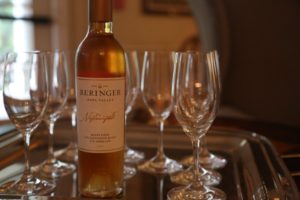
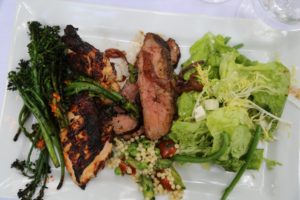
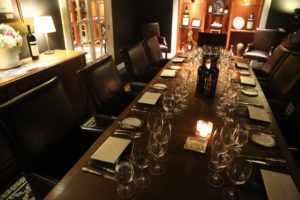
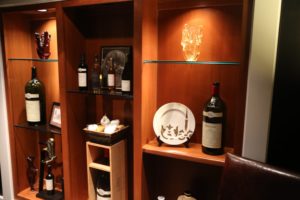
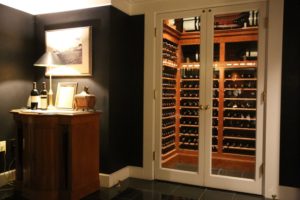
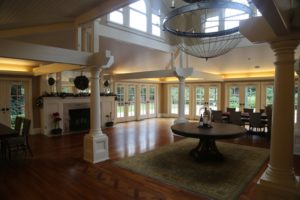


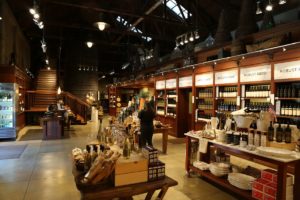
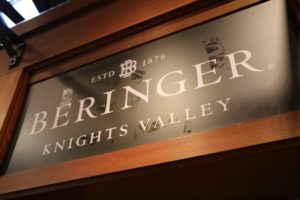
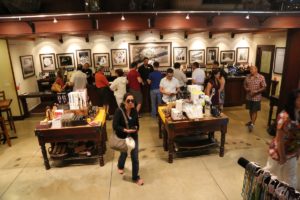
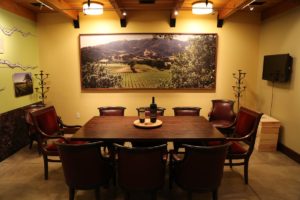
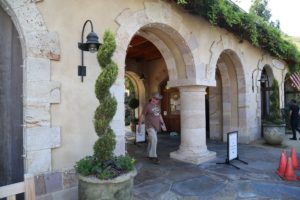
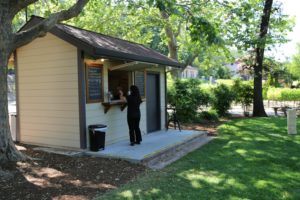
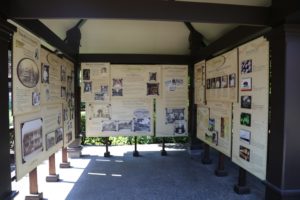

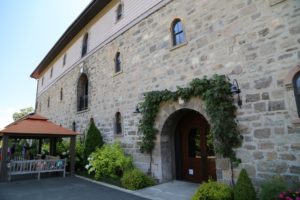
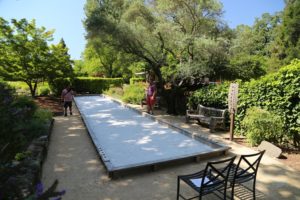

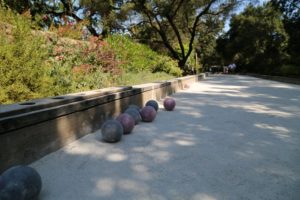
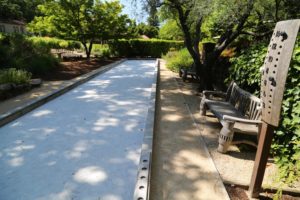
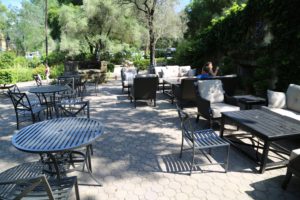
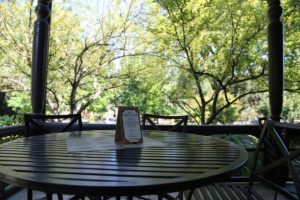
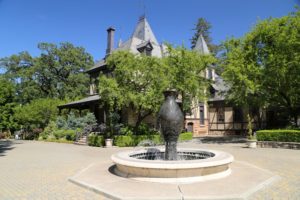
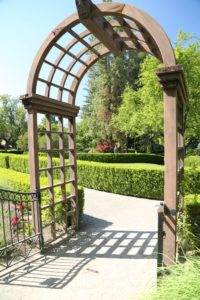
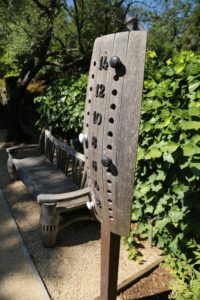
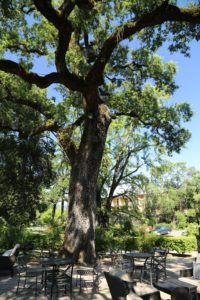
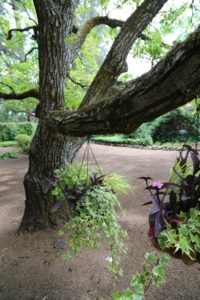
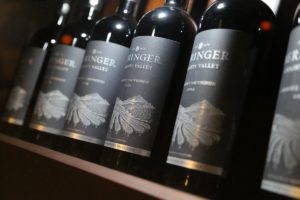
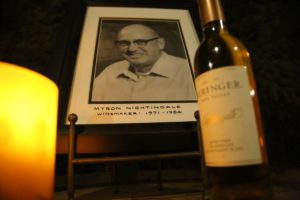

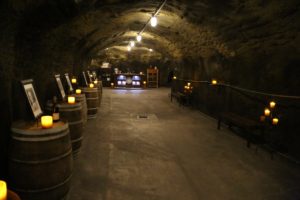
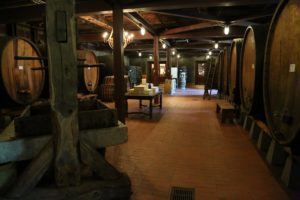
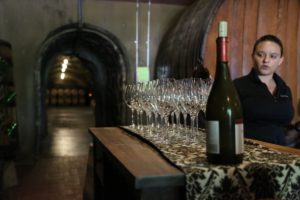
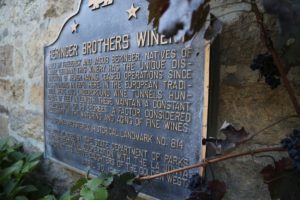
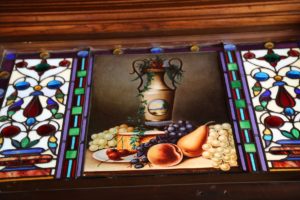
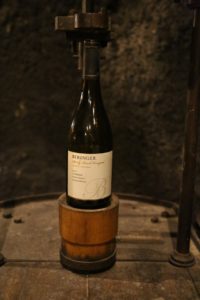
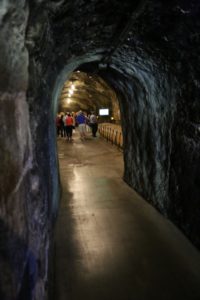


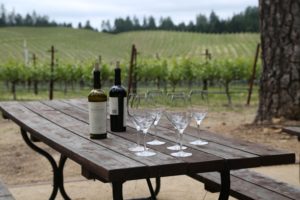
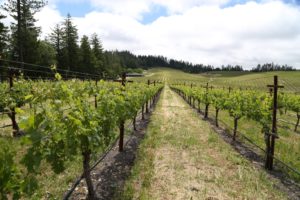
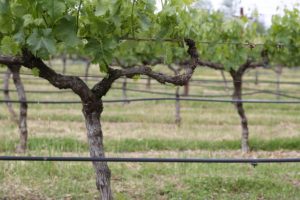


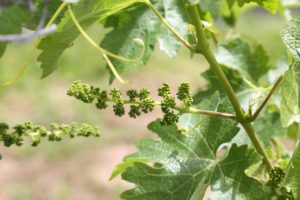
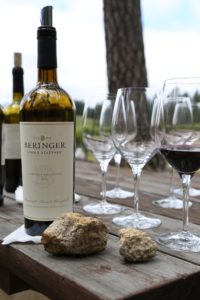
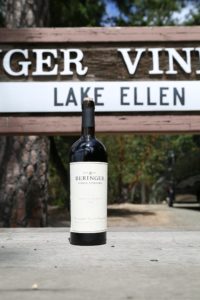
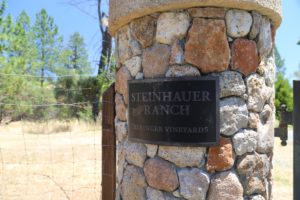
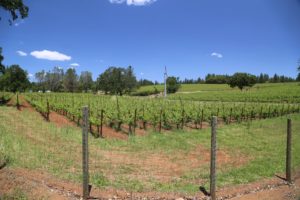


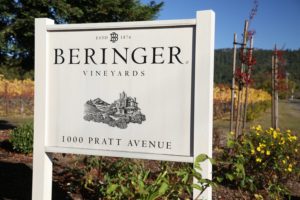
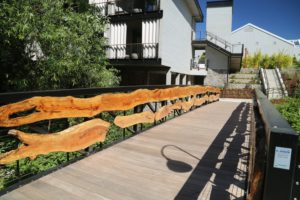
What a beautiful venue. Our son will
be married here next June.
Yes, they have so many great spots to hang out on the grounds. Sometimes they offer special tours and events as well – worth checking out if you are going to be in the area.